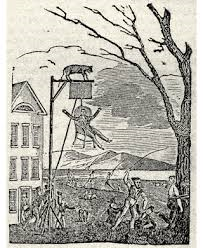 W
WDr. Samuel Adams was a physician, surgeon, farmer, land owner, and loyalist soldier, from Arlington, Vermont.
 W
WGideon Adams was a farmer, soldier, and politician in Upper Canada, British North America, British Empire, now Ontario, Canada.
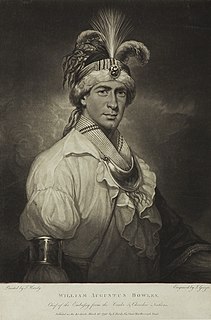 W
WWilliam Augustus Bowles (1763–1805), also known as Estajoca, was a Maryland soldier and adventurer. Seeing action as a Loyalist during the Revolutionary War, Bowles later formed an alliance with the Muscogee people and attempted to establish an independent indigenous American state with British support.
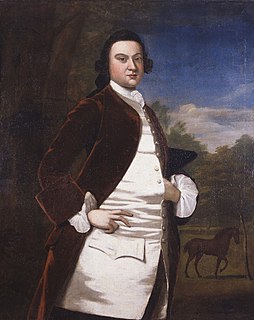 W
WWilliam Byrd III was the son of William Byrd II and Maria Taylor Byrd. He was the grandson of William Byrd I.
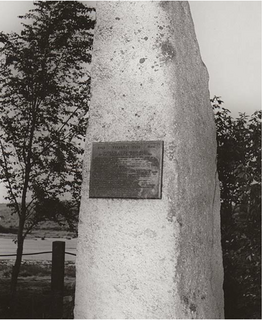 W
WSilvanus Cobb was a Massachusetts provincial army captain and later naval commander who fought for the British primarily in Nova Scotia in the 1740s and 1750s.
 W
WGeorge Hanger, 4th Baron Coleraine was a British soldier, author, and eccentric.
 W
WJames Craik was Physician General of the United States Army, as well as George Washington's personal physician and close friend.
 W
WWilliam Crawford was an American soldier and surveyor who worked as a western land agent for George Washington. Crawford fought in the French and Indian War and the American Revolutionary War. He was tortured and burned at the stake by American Indians in retaliation for the Gnadenhutten massacre, a notorious slaughter of Indians by militia near the end of the American Revolution.
 W
WGeneral Thomas Gage was a British Army general officer and colonial official best known for his many years of service in North America, including his role as British commander-in-chief in the early days of the American Revolution.
 W
WJoseph Gorham was an American colonial military officer during King George's War and later a British army commander during the Seven Years' War and the American Revolutionary War. He is best known for leading a company of British imperial Rangers, called Gorham's Rangers, during the 1750s and early 1760s. Gorham's unit played an important role in the French and Indian War and were early practitioners of American frontier warfare, more commonly known as petite guerre or Guerrilla warfare. He also became Governor of Placentia.
 W
WJedidiah Preble was Captain of Infantry in Samuel Waldo’s Regiment, whom he brought land from and settled in Falmouth, Maine. He served in the Siege of Louisbourg (1745). He also fought in the Battle of Grand Pre (1747). He accompanied John Winslow on his expedition up the Kennebec River and participated with him the following year in the Battle of Fort Beauséjour (1755) where he was wounded. He then participated in the Cape Sable Campaign, part of the expulsion of the Acadians. After the British took control of the Saint John River, they took control of the final river the Penobscot. Preble became commander at the newly built Fort Point on the Penobscot River (1759). He was also active in the American Revolution.
 W
WAndrew Lewis was an Irish-born American pioneer, surveyor, military officer and politician in Colonial Virginia and during the American Revolutionary War. A colonel of militia during the French and Indian War, and brigadier general in the American Revolutionary War, his most famous victory was the Battle of Point Pleasant in Dunmore's War in 1774, although he also drove Lord Dunmore's forces from Norfolk and Gwynn's Island in 1776. He also helped found Liberty Hall in 1776.
 W
WMaj. Robert Gilbert Livingston was an American merchant and a Loyalist during the American Revolutionary War.
 W
WFrancis Marion, also known as the Swamp Fox, was a military officer who served in the American Revolutionary War (1775–1783). Acting with the Continental Army and South Carolina militia commissions, he was a persistent adversary of the British in their occupation of South Carolina and Charleston in 1780 and 1781, even after the Continental Army was driven out of the state in the Battle of Camden. Marion used irregular methods of warfare and is considered one of the fathers of modern guerrilla warfare and maneuver warfare, and is credited in the lineage of U.S. Army Rangers and the 75th Ranger Regiment.
 W
WSir William Pepperrell, 1st Baronet was a merchant, soldier, and slaveholder in colonial Massachusetts. He is widely remembered for organizing, financing, and leading the 1745 expedition that captured the French fortress of Louisbourg during King George's War.
 W
WIsrael Putnam, popularly known as "Old Put", was an American army general officer who fought with distinction at the Battle of Bunker Hill during the American Revolutionary War (1775–1783). He also served notably as an officer with Rogers' Rangers during the French and Indian War (1754–1763), when he was captured by Mohawk warriors. He was saved from the ritual burning given to enemies by the intervention of a French officer with whom the Mohawk were allied.
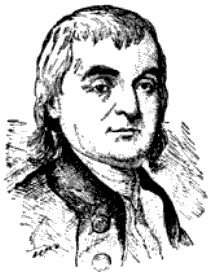 W
WBeverley Robinson, was a soldier and wealthy colonist of the Province of New York. Robinson married Susanna Philipse, heiress to a significant share of the roughly 250 square miles (650 km2) Highland Patent on the lower Hudson River in the Province of New York. With the onset of the American Revolutionary War, he sought to remain uninvolved, but in 1777 formed the Loyal American Regiment, which proved a very active Loyalist force in that conflict.
 W
WSir Frederick Philipse Robinson, GCB was a soldier who fought for Britain during the American War of Independence. His father, Colonel Beverley Robinson, was a Virginian who moved to New York, marrying a wealthy heiress of the Philipse family with Dutch and Bohemian ancestry, Susanna Philipse. Frederick was born in the Hudson Highlands on the family estate in the Philipse Patent, today's Putnam County, New York, in September 1763.
 W
WDavid "Tiger" Roche, was a celebrated soldier, duellist and adventurer, variously hailed as a hero and damned as a thief and a murderer at many times during his stormy life. Roche was born to a middle-class family in Dublin in 1729 and received a gentleman's education, he was in fact so well turned out that his comportment sufficiently impressed the Lord Lieutenant of Ireland to offer him a military commission at sixteen years' old. Roche had fallen in with bad company and was possibly involved in an attack on a night watchman, one of many carried out by gangs of bucks at the time. He fled to North America where he volunteered during the French and Indian War. There his bravery and intrepidity impressed and he quickly rose to a high rank; until accused of theft from a fellow officer. Roche always denied the allegation, stating he had bought the gun in question, but according to the corporal from whom he claimed to have done so, Roche himself had stolen it. Roche was convicted and disgraced by Court Martial. Roche later attacked several people involved in the case, including the Corporal, after which he earned the nickname "Tiger".
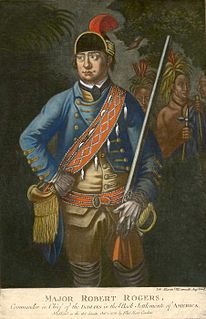 W
WRobert Rogers was an American colonial frontiersman. Rogers served in the British army during both the French and Indian War and the American Revolution. During the French and Indian War, Rogers raised and commanded the famous Rogers' Rangers, trained for raiding and close combat behind enemy lines.
 W
WCharles Scott was an 18th-century American soldier who was elected the fourth Governor of Kentucky in 1808. Orphaned in his teens, Scott enlisted in the Virginia Regiment in October 1755 and served as a scout and escort during the French and Indian War. He quickly rose through the ranks to become a captain. After the war, he married and engaged in agricultural pursuits on land left to him by his father, but he returned to active military service in 1775 as the American Revolution began to grow in intensity. In August 1776, he was promoted to colonel and given command of the 5th Virginia Regiment. The 5th Virginia joined George Washington in New Jersey later that year, serving with him for the duration of the Philadelphia campaign. Scott commanded Washington's light infantry, and by late 1778 was also serving as his chief of intelligence. Furloughed at the end of the Philadelphia campaign, Scott returned to active service in March 1779 and was ordered to South Carolina to assist General Benjamin Lincoln in the southern theater. He arrived in Charleston, South Carolina, just as Henry Clinton had begun his siege of the city. Scott was taken as a prisoner of war when Charleston surrendered. Paroled in March 1781 and exchanged for Lord Rawdon in July 1782, Scott managed to complete a few recruiting assignments before the war ended.
 W
WJohn Stark was a New Hampshire native who served as an officer in the British Army during the French and Indian war and a major general in the Continental Army during the American Revolution. He became widely known as the "Hero of Bennington" for his exemplary service at the Battle of Bennington in 1777.
 W
WGeorge Turnbull was a Scottish American soldier and settler in New York City.
 W
WGeorge Washington was an American political leader, military general, statesman, and Founding Father of the United States, who served as the first president of the United States from 1789 to 1797. Washington led the Patriot forces to victory in the American Revolutionary War, and presided at the Constitutional Convention of 1787, which established the Constitution of the United States and a federal government for the United States. Washington has been called the "Father of the Nation" for his manifold leadership in the formative days of the country.
 W
WMajor-General John Winslow, descendant of Edward Winslow, was an officer during the French and Indian War.